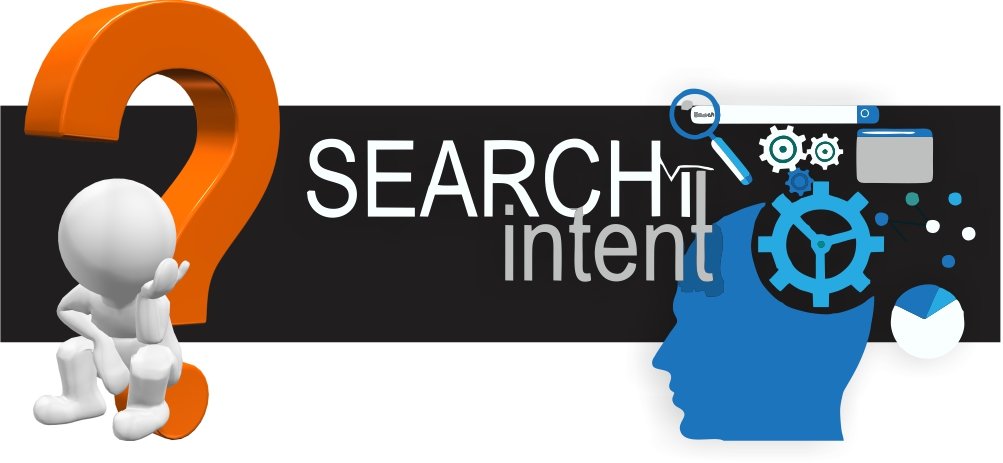A complete search intent guide for marketers
Posted On July 19th, 2024
Array
In today’s digital landscape, understanding search intent is a fundamental skill for any marketer. It’s the key to unlocking the “why” behind user searches, allowing you to craft content that resonates and drives results. This guide equips you with the knowledge to become a search intent master!
Doing a quick web search before doing something has become so common. You’re opening a gadget to make a fast Google search, from minor things like looking up the definitions of terms to big ones such as purchasing a new home. This represents what Google refers to as a ‘micro-moment’, or when a person looks at a gadget when they need something. These few seconds are among the most intent-rich times for which content creators and SEO service providers must optimize.
People want rapid answers, but they also want the appropriate answers that will meet their search purpose or the reason they sought initially in the first place. It’s simple to enhance the searches and the which and how queries, but how can one maximize the searches for whys? This blog will guide you through all you need to know about search queries and why it’s so vital for optimizing your Search engine:
What is Search Intent?

Search intent also referred to as user search intent serves as the reason or motive for every search. It concentrates on the cause of why someone conducts a Google search. Consider the fact that everything you undertake has a purpose. When users ask someone a query in person, you expect to get a response. Furthermore, when you put terms into the search field, you desire to understand and gain knowledge about something, similar to when you request a query on search engines. When you press search, you expect Google to provide the best response to your inquiry.
The very first result was indeed an advertisement for Amazon selling N95 masks on their website. On the right-hand side of the SERP, there are sponsored links for the eCommerce site Shopee, which also sells N95 products. After some scrolling down, did I learn more about the mask and whether it was the one I required to avoid contracting the infection?
This is an illustration of a question having various meanings because the search engine results page displayed both Information-based and Transactional results. As I already have a certain item in mind, Google viewed my inquiry as coming from a user who is in the purchase stage. However, the search engine also offered me educational articles to help me understand more about the product.
Googles’s Algorithm for Search Intent
Google’s algorithm is much better than we think, as it provides answers to all sorts of users, regardless of where they are in the inquiry or buying process. This is the task Google has set for digital marketers like us to supply the material people may require at the moment. Nobody has yet developed an accurate method for determining search intent. Most, though not all, Online marketers fail in this area, in carefully and precisely comprehending the user’s search intent. If you’re feeling a little bewildered at this point, it’s recommended to just go back to the foundations of SEO to have a better knowledge of Searches and its many pillars and elements.
Types of Search Intent-
Search intent is divided into three categories that correspond to Google micro-moments of understanding, do, go, and purchase. The following are the many forms of search intent:
1. Informative

Most individuals conduct online searches in order to locate information. It might be around a local company, children, automobiles, web marketing, or anything else. People conducting informative searches have a problem or circum- stance in mind and are looking for a term to associate it with.
If I want to know more about Kobe Bryant, I anticipate that I’ll find all I need to know about him and his career as an NBA star when I search his name online. And Google delivers the following information to me, Bryant’s Knowledge Card, a compilation of all the material published on him, top stories, and Bryant’s Twitter handle, where he was most likely active.
2. Navigational

This search intent may also be used to navigate around website pages. This signifies that the user understands what website and page he or she wants to see but is unclear of the precise URL. The search purpose is to discover and travel to the location, whether geographically or digitally.
3. Transactional

People that are wanting to buy anything online will do this. They are constantly looking for the finest prices and places to shop. Transactional queries are easily identified by the terms ‘purchase’, ‘for sale’, ‘cheap’, or ‘service’. These are enhancers that inform Google and Search engine optimization, that the consumer is already in the purchasing process.
The majority of the information supplied here ought to be transactional, however, Google has also presented us with information on the item. As a result, the query’s search objective is both transactional and informative. Keywords, inquiries, or whatever you want to call them all to have varied meanings depending on who is searching for them. Google displays a range of results that the engine believes the user requires, making our work as content marketers a little harder because we must deliver excellent material for all customers and searches along their buying journey.
The Importance of Search Intent, which is Growing

Search engines were not always so complex. Posting frequent material and leveraging keywords was once enough to bring you to the pinnacle of the SERPs. However, as Google’s algorithm developed, so did SEO and its practice guidelines. However, search intent came from nowhere in the Search engine scene. It has been gathering signatures for quite some time, and marketers have just now acknowledged and recognized its significance.
The usefulness of search intent was first acknowledged with the release of the Google Hummingbird update, in which the search engine revealed a more comprehensive understanding of the purpose of searchers’ queries in order to correlate and give relevant results to users. Then came RankBrain, Google’s first AI-centered algorithm update, meticulously selecting search results and introducing the notion of understanding searches that may not contain the exact terms that were looked for, but nevertheless give the closest response possible to answer the question.
When the Google BERT upgrade was released in late 2019, Seo experts were not shocked when ‘search intent’ was given substantial weight in SERP results. This was a challenge to SEOs and digital marketers to generate better content that focuses on the user’s goal rather than Google’s algorithm.
How to Identify Search Intent?

There are several approaches for detecting the search intent of a particular ‘keyword’ or ‘query’. The first strategy is to establish search intent by grouping terms with modifiers. In all respects, there is no straightforward method to determine a keyword’s search intent. To develop such accurate assumptions, you’d need a high degree of vocabulary and user knowledge. Also, one must check the SERPs.
The second way is to conduct a Google search and manually determine the search intent depending on the Google results webpage. First, you do a search and examine the very first page of Google’s results. Then, make a list of the results returned by the keyword or query.
Here are some points to look into:
– What SERP protocols to use?
– Different kinds of advertisements appear on the page
– Determine the purpose of the top material displayed. Is the material informative, navigational, or transactional in nature?
– What kinds of content are accessible? Are there any imagery, videos, or sales pages?
After you’ve finished analyzing, you may use that information to determine the keyword’s search intent. Because Google displays guidelines, you may deduce that a term is informative. You may also deduce that a single term has various search intents because it returns two distinct sorts of results. There is no one approach to determine a keyword’s search intent. One term might have two different sorts of search intent based on the material that appears on the SERP.
Once you’ve discovered the objective of the keywords or query, you could now develop content that is comparable to the top content in kind and features while providing more worth than its counterparts. There are tools available to assist you, like SEO Clarity, but a simple procedure of manually reviewing keywords and evaluating the top content will be enough. Simply consider what your users want and deliver the appropriate response.
The most important to note is to determine the purpose of the search intent. It not only produces the outcomes, but it also offers your users the data they require. The material should be relevant to the user’s journey and the content will accompany the user on the path from informative to transactional by determining the appropriate search intent. Although the rating on Google is vital, earning your users’ approval is the greatest approach to developing your business as well as concentrating on the users’ search feeds, whether it is offline or online.
Ans: Informational: The user is looking for more information about a particular topic. E.g., “how does photosynthesis work?”
Navigational: The user is looking to visit a specific website or page. E.g., “OpenAI website.”
Transactional: The user is looking to buy something or perform a specific action online. E.g., “buy running shoes online.”
Commercial investigation: The user is looking to compare products or services before making a purchase. E.g., “best smartphones 2023.”
Ans: By understanding and catering to search intent, webmasters can optimize their content to meet the users’ needs. This can improve organic visibility, increase click-through rates, reduce bounce rates, and lead to better user satisfaction. Search engines, especially Google, are increasingly focusing on user intent, so aligning your content with intent can enhance rankings.
Ans: Keyword Analysis: Analyze the specific words used in the search query. Words like “how to” or “what is” typically indicate informational intent.
Check SERPs: Search the query on a search engine and see what kind of results come up. If the top results are mostly product pages, the intent is likely transactional.
Use Analytics: Tools like Google Analytics can provide insights into user behavior on your site, which can help infer their intent.
Ans: Absolutely! As market trends, technologies, and user behaviors evolve, search intent can change. Seasonal events, global happenings, or new product releases can shift intent. Therefore, it’s essential to continually assess and optimize content to stay relevant to the current search intent.
Ans: Targeted Content Creation: Create content specifically tailored to the identified intent. For transactional intent, provide clear product descriptions and CTAs. For informational intent, give in-depth and accurate information.
Improve User Experience: Ensure your website loads quickly, is mobile-friendly, and offers a clear navigation structure.
Use Relevant Meta Data: Make sure the title tags, meta descriptions, and URLs are aligned with the search intent.
Engage in A/B Testing: Test different content variations to see which best satisfies the user’s intent and drives desired actions.
Related Posts

UFC 317 – A Night of Unbelievable Results : Topuria Knocks Out Olivera!
Posted on June 29th, 2025
Undoubtedly, UFC 317 delivered electrifying fight action, headlined by a thrilling showdown between Topuria and Olivera. This blockbuster event was packed with unforgettable moments, decisive finishes, and game-changing performances....
Read More →
You can now buy Crypto under 100 Rupees in 2025!
Posted on June 27th, 2025
Are you curious about crypto investment in 2025 but have only ₹100 to start with? Don’t worry — you can still buy crypto under ₹100 and begin your journey...
Read More →
How Much YouTube Pays Per 100k Views In India
Posted on March 21st, 2025
How Much YouTube Pays Per 100k Views In India – YouTube is one of the most popular websites in the world with over 2.7 billion monthly users. The video...
Read More →
5 Roadblocks To Digital Marketing Transformation
Posted on February 18th, 2025
In the time of digitalization, marketing is very useful for company’s growth and success. Digital transformation ensures the making of more sustainable solutions by using the right skills. The...
Read More →© All Copyright Reserved japjitravel.com
Leave a Comment :